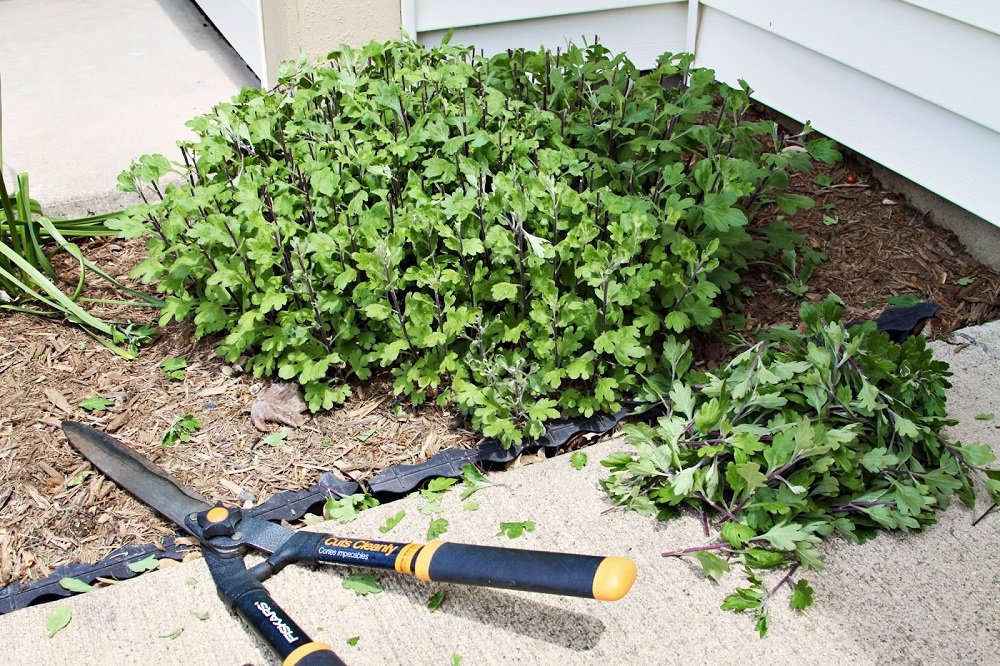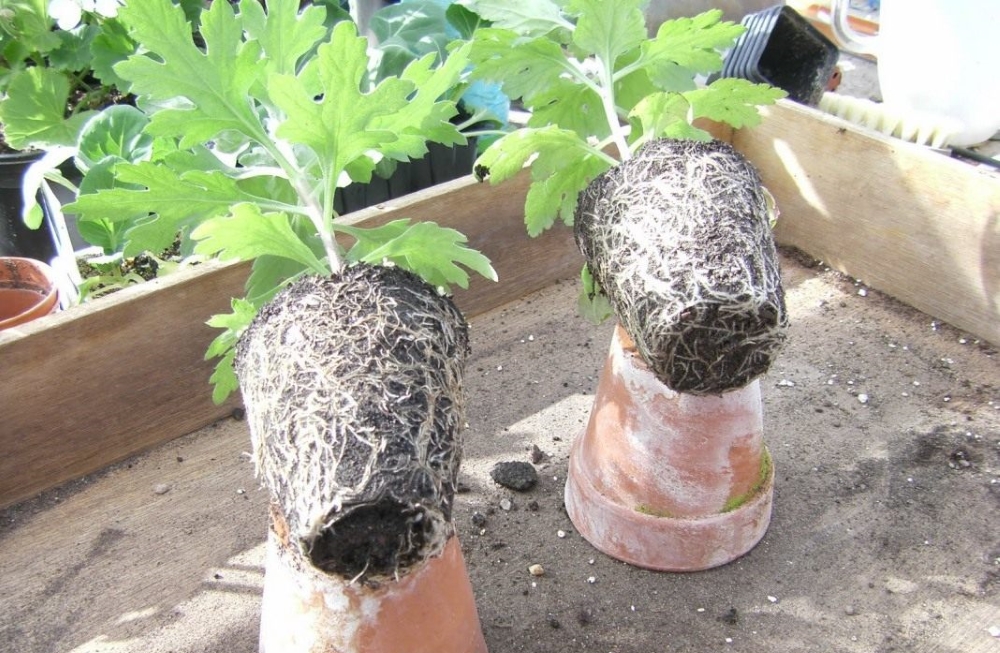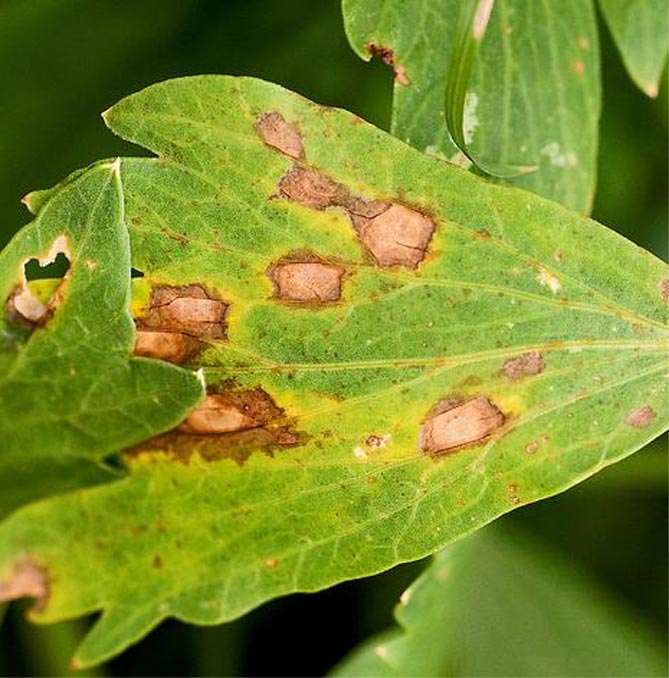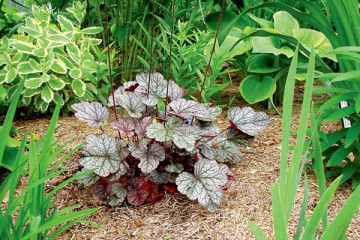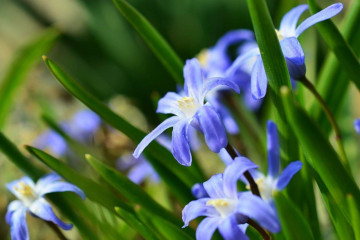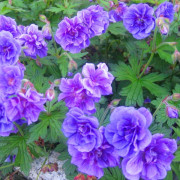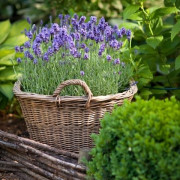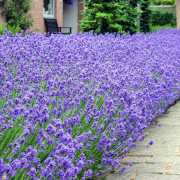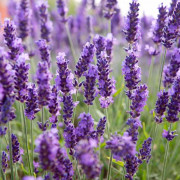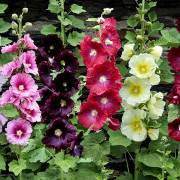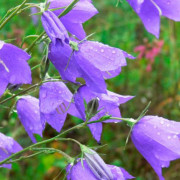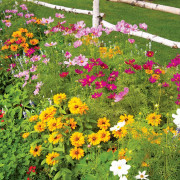Perennial chrysanthemums - planting and care in the open field
Content:
- What is garden chrysanthemum
- Planting chrysanthemums in spring
- Spring care rules
- Chrysanthemum transplant
- Are chrysanthemums dug up for the winter
- Hiding chrysanthemums
- When to wait for seedlings in spring
- From the pot to the street
- Reproduction of chrysanthemums
- What is chrysanthemum sick
- Why does not it bloom
- Video
People grow flowers in gardens and for bouquets. Autumn comes the time of one of these plants - chrysanthemums. In order for them to delight with their flowering, you need to properly care for them.
Many novice gardeners begin their acquaintance with this flower with a confusion: is it a perennial plant or an annual? Meanwhile, the answer is simple - they exist and such and such. Below we will talk about the garden flora that can live for several years.
What is garden chrysanthemum
Chrysanthemum is a herbaceous plant from the Asteraceae family (another name is Astrovykh). It is called Chrysanthemum in Latin. The people sometimes call her a golden, or sunny, flower. This is because most species (of which there are 29 in total) have yellow or orange shades of inflorescences.
For plants such as chrysanthemums, perennial planting and care in the open field does not require any special approach. This flora is quite unpretentious, while beautiful. The shrubs are able to survive in the Russian winter, they bloom late and for a long time.
Garden chrysanthemum is divided into varieties depending on the shape of the flowers:
- One - or two-row. They have one or a pair of petals, respectively. For example, like the Tricolor variety.
- Semi-double. There are only three petal layers here.
- Terry. There are many petals, they all differ in shape, form a lush inflorescence.
- Anemoid. The flowers of such a chrysanthemum resemble anemones.
- Pompom. Numerous small petals form a pompom. They are often called spherical.
Chrysanthemums bloom in the garden late - in August, flowering continues in autumn. This flora is able to withstand frosts down to -10 degrees Celsius.
Planting chrysanthemums in spring
Not everyone knows how to plant a chrysanthemum. There is nothing complicated in the procedure:
- Choose a suitable day or time. There should be no active sun.
- In a suitable place, a hole is made about 40 cm deep.
- The bottom of the hole is watered, then drainage is poured there, soil mixed with fertilizer is added (in a ratio of 1 to 20).
- A chrysanthemum is placed in the hole, its roots are buried. The flower should not be deeply buried.
The most difficult thing in planting this flora is to comply with all its maintenance requirements.
When planting chrysanthemums in open ground and subsequent care for them, the following should be considered:
- They love the sun. They won't even like the slightest shading.
- A moisture balance is required. These flowers do not like when the water stagnates (therefore they are planted on a small hill). But overdrying the soil will kill the flora.
- It is imperative to choose the right land. It should be loose, moisture-permeable, fertilized.
- Chrysanthemums need drainage. Sand works best for it.
Spring care rules
After the planting of chrysanthemums in the spring, they need special attention only for the first couple of weeks. In the future, you will have to make less effort to grow them.
What to do:
- The first time (from two to five days after manipulation) the seedling should be artificially darkened. The flower loves the sun, but it takes time to adapt to a new place.
- For a tall variety, it is imperative to organize support for the time of adaptation.
- Immediately after planting, the first pinching is carried out - the removal of the upper growth nodule on the plant. 3-5 days after that, the second pinching is carried out. This time remove the upper part of the stem with 2-3 knots.
Chrysanthemum transplant
From time to time, it is recommended to transplant the garden perennial chrysanthemum. The fact is that even the most fertilized soil depletes over time. The optimal balance of minerals and organic substances in the soil composition is very important for this flora. Experienced gardeners carry out this manipulation annually in May - there are no night frosts, but it is not yet time for an active summer sun. Transplantation is carried out as follows:
- A new location is being selected.
- A flower in an old flower bed is well watered - this way there is less chance of damaging the roots.
- After extraction, the uterine bushes should be divided so that each separated part has its own root.
- Separated shoots are planted each in its own hole, watered well. The distance between the seedlings should be at least half a meter.
- After five days, the transplanted flowers are recommended to be fertilized with suitable means.
Are chrysanthemums dug up for the winter
Newbie gardeners sometimes wonder whether it is necessary to dig up chrysanthemums for the winter. There is no definite answer, since each variety has its own requirements. Some of them can safely winter on the street, others need to be transplanted into a pot and taken indoors for the winter. In any case, the chrysanthemum needs some points of care regardless of where it spends the winter:
- Pruning. You need to let it bloom and cut off the stems, leaving only 10 cm.
- Top dressing. At the beginning of autumn, it is recommended to start preparing and switch to phosphorus-potassium fertilizers. They will help the flower to survive the cold.
As a rule, the Korean (or Chinese) hybrid street chrysanthemum is the species that is most often found in Russia, it is winter hardy. This means that it does not need to be transplanted. Other species (for example, Chrysanthemum Mix - indoor autumn perennial) may need it.
Hiding chrysanthemums
Those types of sunny flowers that remain on the street for the winter must not only be cut off, but also covered. This should also be done correctly:
- The formation of pits in the bush should not be allowed. Otherwise, water will stagnate there.
- If the winters are not very cold, then there is no need to do serious shelter. It is enough just to cover the cut bush with peat and dry leaves. When the first snow appears, sketch it on top.
- If the winter is fierce, then you should attend to the creation of a more serious shelter.
You should not wrap up the cut bush from the first cold snaps. Light frosts will only benefit him, hardening. It is recommended to cover the plant with special materials: lutrasil or spandbond. If they are not there, then a regular polyethylene dense film will do. Be sure to clamp it around the edges with stones to exclude the possibility of being blown away by the wind.
They never use shavings or peat under the shelter - so they get wet, they will keep moisture. Stagnation of fluid will provoke the death of the flora.
When to wait for seedlings in spring
The first sprouts of chrysanthemum start up with the first heat. Even spring frosts usually cannot prevent this.
The bush chrysanthemum hibernating under the shelter is the most vulnerable in this respect - it can flare up (if ventilation is not thought out when creating a shelter). Or a strong frost will damage new seedlings, then they will bloom poorly. The flora wintering in the house does not have such a problem.
From the pot to the street
So, the chrysanthemum was transplanted into a pot and overwintered safely at home. Now it's time to move it to open ground. You need to know how to properly plant a chrysanthemum in the garden that has survived the winter in the house:
- Before transplanting, be sure to put flowers still in pots outside for a week and a half on average. So they will become hardened, they will more calmly endure all the manipulations.
- You can also transplant to the old place, after fertilizing the soil there with ash. During the winter, the soil has already had time to rest.
- Two weeks after transplanting, the bushes can be fertilized.
Reproduction of chrysanthemums
You can buy a ready-made, grown-up shrub. But self-grown flowers are especially prized. You can breed them in one of several ways.
Cuttings
Cutting chrysanthemums is one of the most popular ways to grow them, because it is suitable for growing flowers even from a bouquet.
A small stalk is placed in water. It will put down thin roots. When they appear, you need to transplant the sprout into the substrate. It should contain peat and sand in equal proportions. The box with the substrate should be covered with glass or plastic, creating a greenhouse.
Unlike other plants, chrysanthemums do not need heat. You can cut it at a temperature not higher than 15 degrees Celsius. When the plant gets stronger, it can be transplanted into a separate pot, then into open ground.
Growing from seeds
Another frequently asked question is how to grow a chrysanthemum from seeds. Again, nothing complicated - they are sown directly into open ground in May. When the sprouts reach 10 centimeters in height, they are pinched for the first time. If this procedure is not carried out, you can forget about the beautiful shape of the bush. Having stopped expelling tall stems, the chrysanthemum will bloom for the first time in the fall.
You can buy golden flower seeds from the store. You can also assemble it yourself, observing the following conditions:
- Protect inflorescences from getting wet.
- If the plant is taken to the house for the winter, then before collecting the seeds it should be kept on the windowsill, where there is a lot of sun.
- The seed is ready to be harvested as soon as the inflorescences begin to darken. If the moment is missed, then they will begin to crumble.
It is impossible to plant fresh seeds right away, otherwise only 10% will begin to sprout. After ripening for a couple of months, this percentage increases.
Chrysanthemum seedlings
Reproduction of this flora is also possible with the help of seedlings. It is either grown from seeds at home, or bought in a specialty store. This method is only suitable for spring planting.
Planting a bush
This method is recommended to be applied on average once every two years. Not only to multiply the flower, but also to rejuvenate the shrub. It consists in the following: the plant is dug up, several shoots with roots are separated from the mother bush with the help of a secateurs. All separated parts are seated separately.
This is the only recommended method for planting new chrysanthemums in autumn.
What is chrysanthemum sick
Like all life in this world, flowers can hurt. Chrysanthemum is no exception, despite the fact that it has a fairly strong immune system. Diseases that threaten this flora:
- Fungus.It appears from poor ventilation, stagnant water, high soil acidity and excess nitrogen in the fertilizer.
- Septoria. Chrysanthemum leaves become spotty, then dry out altogether. The plant is treated like this: the damaged leaves are removed, the surviving fungicide is treated.
- Rust. With her, the leaves also deteriorate, only now they become whitish. May appear as orange powdery spots. Damaged greenery should be removed, the plants should be thinned, moisture should be avoided on the leaves. Apply a fungicide if necessary.
Why does not it bloom
It is not only diseases or parasites that are responsible for the fact that the chrysanthemum does not bloom. If for some reason there are still no flowers, the reason may be as follows:
- Bad light;
- Lack or excess of fertilizer;
- Lack of transplant;
- Fully unsecured rest period.
Chrysanthemum is popular everywhere: at dachas in the Moscow region, and in Siberia and the Urals. This flower is not capricious, but it requires a certain amount of attention. With due care, this flora will certainly delight its owners with stunningly beautiful flowering, it will be strong and healthy.
Video




